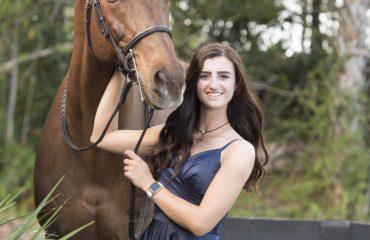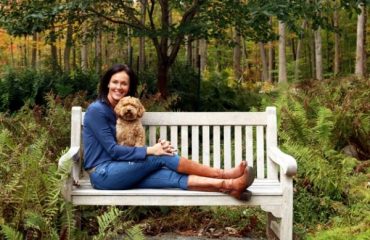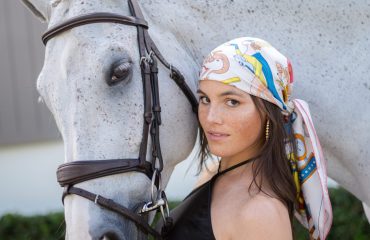Renée Tucci, Murder Hollow
Chester County, Pennsylvania
Wealth management and stallion owner and breeder
How long have you been part of the horse world?
I grew up riding and took a break once I went to college. I was fortunate to spend some of my early 20s riding in Ireland before moving back to the USA. In my late 20s, I had the opportunity to own my first stallion and begin breeding.
How did your farm get its unusual name?
The farm where we used to live had a bit of a sordid past, as a murder had taken place on the property in the 1700s. For the next 100 years the valley was referred to as Murder Hollow. As you can imagine, the name fell out of fashion and was later changed to pay homage to a local iron furnace. When our first foal was born, we jokingly used the farm name Murder Hollow and after that, the name just stuck.
How did you get started in breeding?
I always admired colorful and flashy coats, so ever since I had the opportunity to begin breeding, the goal has been to produce exceptional, athletic and well-mannered horses that are physically and mentally sound. Our program is a mix of traditional warmblood breeding and our Knabstrupper program. Knabstruppers are a rare Danish breed that shares a similar leopard coat pattern to Appaloosas or POAs.
What part do you play in the horse world?
Outside of standing stallions to the public and producing our own foals, we work hard as breed ambassadors to encourage newcomers to the breed. We keep a small string of show horses and promote our breed and program in multiple disciplines including dressage, hunters and four-in-hand driving.
What’s your favorite thing about what you do?
There is nothing more exciting than the anticipation of a long-awaited foal. From planning the pairing to delivery and watching a foal take its first steps, it’s an incredibly rewarding process. Finding the perfect human match for each foal never gets old—we’ve made so many lifelong friends along the way. As a stallion owner, I love to see our stallions out showing and representing our program. Plus, the added bonus of all the adorable foal photos that mare owners send come spring!
What’s your biggest achievement in the horse world?
We’ve really been able to make a large and positive impact in the Knabstrupper breed in North America. When I first got involved with the breed, it was very insular with not many people breeding to the stallions that were available. Our one stallion, Pax Asgard af Pegasus, quickly became an incredibly popular breeding stallion and opened the breed up to mare-owners who had never heard of the breed before or knew very little about it. Pax earned bronze in the 2021 Get of Sire class at Dressage at Devon, and while not everyone brags about a third place win, I think it was a huge accomplishment for a nontraditional warmblood stallion to beat out traditional warmbloods. He’s now sired foals on three continents, and in addition to being driven in harness and ridden in dressage, he’s now showing in Florida on the hunter circuit. Not many stallions can offer that level of versatility and popularity in such a short time.
What are your goals for the future with your farm and your horses?
We’re working hard to continue to expand our program and the breeding pool of Knabstruppers in North America. We now have a total of five stallions and are regularly importing new breeding stock from Denmark. Early on, we made a commitment to placing a huge emphasis on the mares that enter our program. Many of our mares remain active in work or have retired after successful show careers. We have mares that have gone to the top of sport and mares that have produced Olympian sons. I can only hope to continue to invest in high-quality breeding stock and to continue producing exceptional sport prospects for many years to come.
What’s the best thing about your life?
Easy: We are surrounded by cute spotted foals.
Best kept secret about what you do?
If you follow us on Facebook or on our website, you’ll know I’m a bit of a research nerd on all things horses. From nutrition to development, we take a scientific-backed approach. I’m often asked about color genetics, given so many of our foals are uniquely patterned. People often think that you need to breed a mare to a leopard colored stallion in order to get fancy coats for foals—this is, in fact, incorrect. Homozygous fewspots (homozygous for the LP and PATN1 gene) are the ticket to producing loudly marked leopard foals. Fewspot stallions like Pax Asgard af Pegasus tend to confuse people since they almost look gray in appearance, but he’s the secret to leopard patterns!
For more information, visit www.murderhollow.com
Photos by Adrienne Morella, www.adriennemorellaphotography.com
















